Treatments
Your Feet and Your Body Structure…or Biomechanics
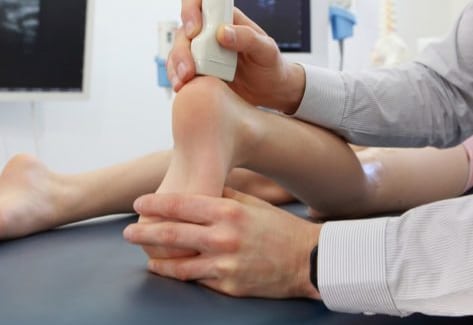
The human foot is a complex structure made up of 26 bones and two sesamoids, held together by soft tissue material – muscles, ligaments and tendons.
The human foot was designed to walk on soft surfaces like earth and sand rather than today’s hard and flat man-made surfaces. So it’s of little surprise that with the average person taking 14,000 steps per day, damage often occurs to the soft tissue supportive structures of the feet.
Over time, soft tissue slowly becomes stretched and this loss of support causes abnormal foot function during walking or running. In turn, this leads to changes in the biomechanics of the ankles and further up the leg to the knees, hip, pelvis and spinal column.
1ASSESS
At Dr. Abbie Clinics our practitioners are trained in the unique Najjarine Biomechanical Assessment (NBA) technique, an advanced podiatric biomechanical technique designed to identify the cause of a patient’s condition and help prescribe their treatment regime.
The system – developed by Dr Abbie Najjarine – has its origins in engineering, allowing the practitioner to analytically and holistically assess the patient’s biomechanical alignment, from the feet up, whilst educating the patient on the ‘why’ and ‘how’ of their condition.
Ultimately, Dr. Abbie has combined many accepted techniques with his own unique approaches and methods into an easy to follow set of principles and formulas.
2DIAGNOSE
Following assessment using NBA we can diagnose the cause of a patient’s biomechanical problems and pain. Once the cause of pain is identified we can then treat the source, not just the symptoms.
3TREAT
To treat the source of the problem we use custom prescribed orthotic therapy integrated with other treatment methods to provide a holistic approach to eliminating pain and improving well-being.
Therapeutic Massage
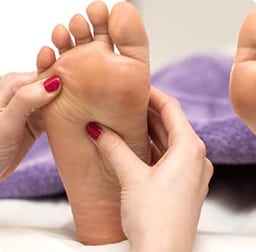
E.g. a subluxated (partially dislocated joint) may be difficult to mobilise into the ideal position if the surrounding muscle is tight preventing any movement OR we may identify a trigger point (taut band of tissue) that we can further direct an acupuncture needle into this area. The tight soft tissue will adversely affect range and quality of motion!
Stretching

At Dr. Abbie Clinics we will prescribe a number of different stretching techniques to suit your particular condition and you personally, to ensure you achieve the best possible results.
Strengthening
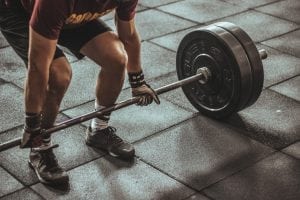
We will ensure that you understand in depth what your strengthening training program is designed to achieve and that you use the correct techniques, whether using weight bearing methods or actual weights.
Strapping
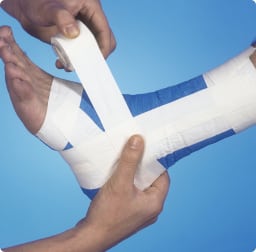
Strapping techniques should be used in conjunction with other conservative treatment modalities e.g. stretching, strengthening, mobilisation, orthotic therapy and injections. Strapping is common for heel pain (plantar fasciitis, severs), ankle stability, and knee pain (patella-femoral pain, os-good schlatters disease).
Shockwave Therapy
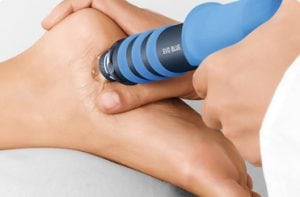
Similar to dry needling we aim to induce an inflammatory response – Shockwave is indicated for a wide variety of acute and chronic injuries.
Prolotherapy and Neural Therapy

Studies suggest that cartilage-specific anabolic growth is a direct result of the injection (Topol et al, 2015).
Further studies have revealed evidence of fibroblast and vascular proliferation and collagen deposition- this increases ligament strength/thickness, shock absorption and weight bearing ability (Sit et al, 2016).
Neural Therapy – most would assume local anesthetic (LA) injections are only utilised for anesthesia purposes. However, LA injections can also be utilised as an alternative to break down scar tissue and disperse adhesions.
Orthotic Therapy

If patients are walking on hard unyielding surfaces that will not assist the patient with comfort and compensation, then we need to create a new walking surface to maintain the foot in a neutral position.
Foot Mobilisations
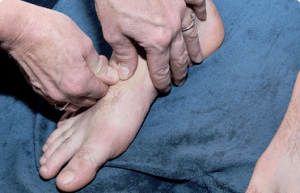
We use a systematic approach to mobilising the foot, ankle, knee and hip bones (best used in conjunction with orthotic therapy and exercise prescription).
Dry Needling

An acupuncture needle inserted in and around these taut bands of tissue can instigate a muscle twitch response. The body identifies the needle as a ‘foreign object’ which then will elicit an inflammatory response to the area subsequently breaking down the scar tissue.


